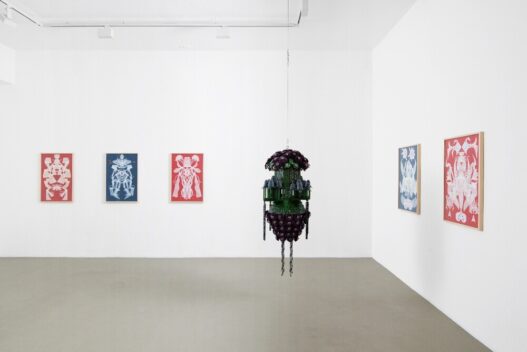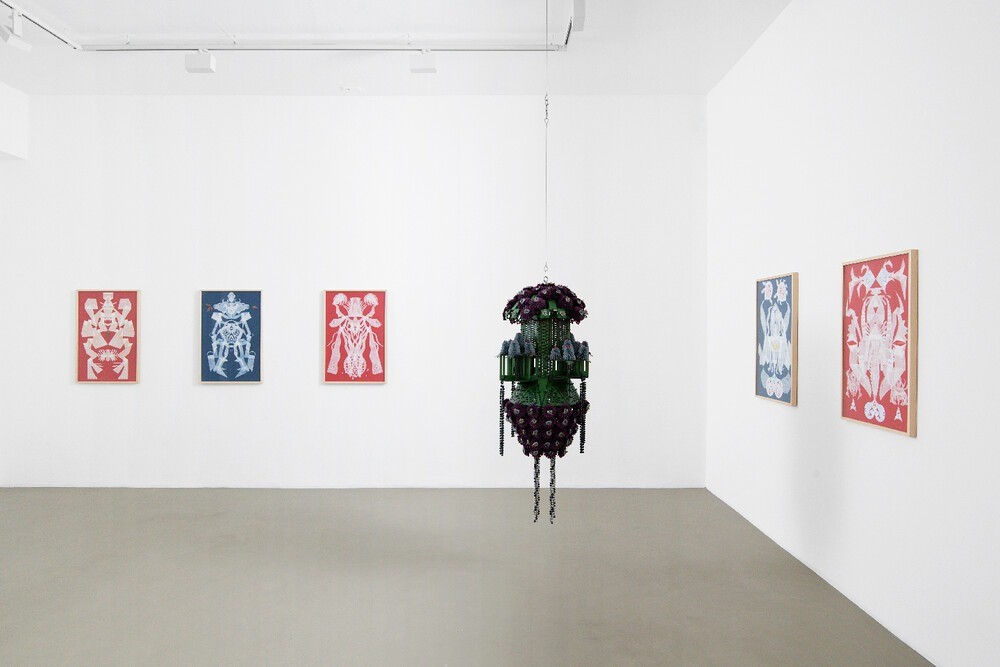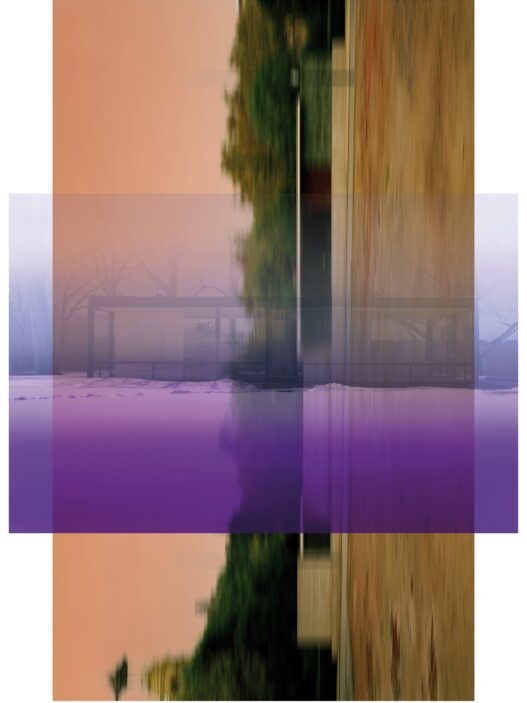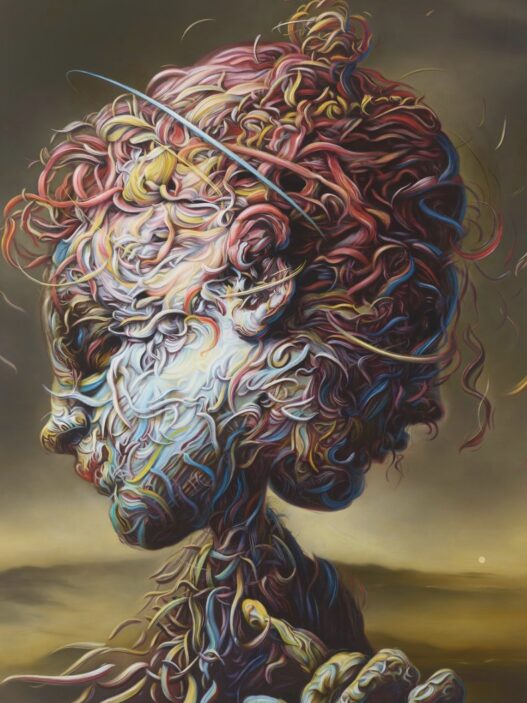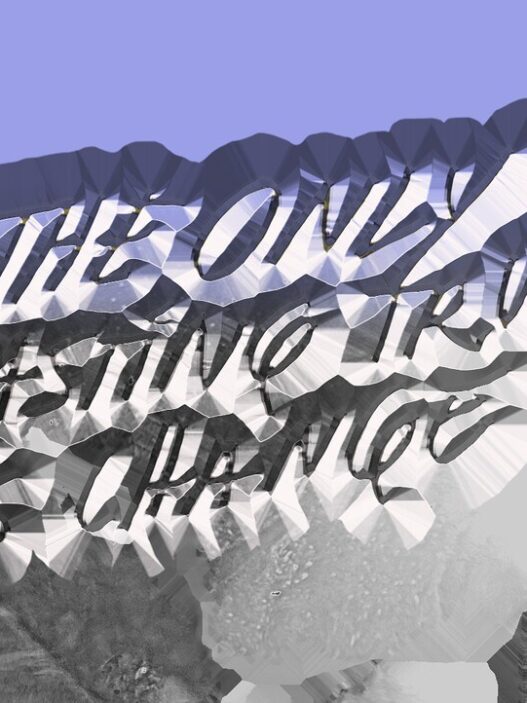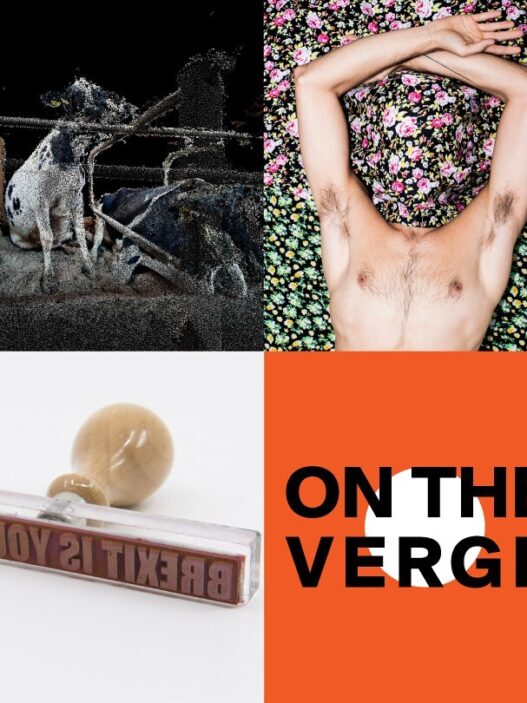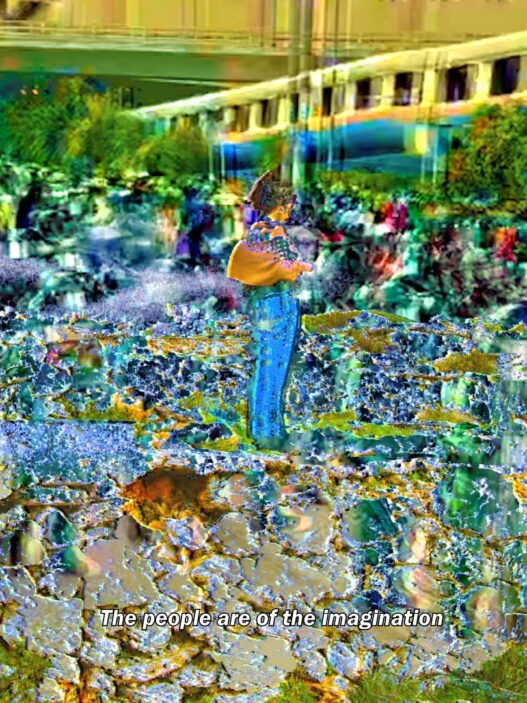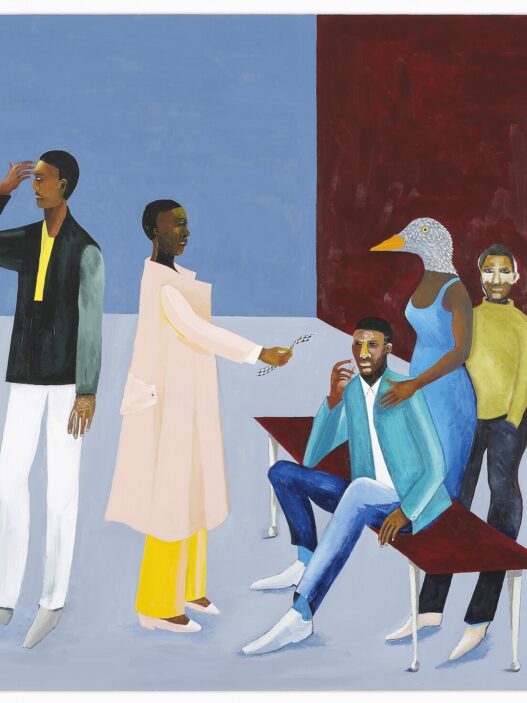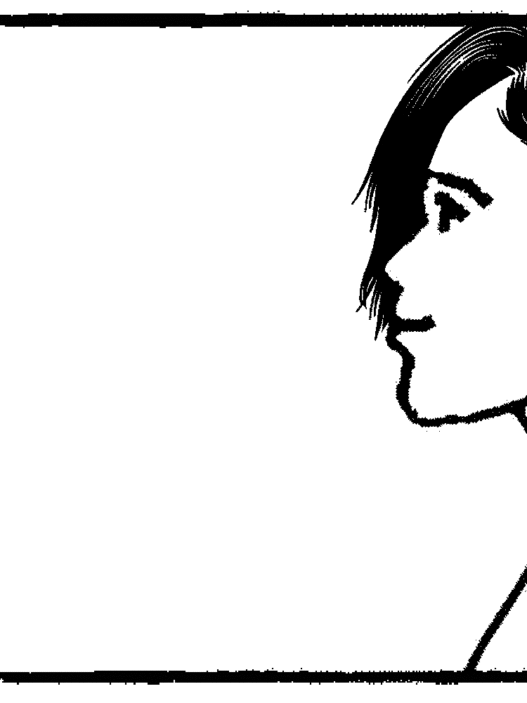October 18–December 3, 2022
The fourth solo exhibition by Haegue Yang is on display at Galerie Chantal Crousel. The exhibition features Yang’s latest investigation into hanji (traditional handmade Korean paper made from the mulberry tree), which has led to a new body of work consisting of paper collages, as well as her continued exploration of her signature materials, including venetian blinds and metallic bells.
The exhibition’s name, Mesmerizing Mesh—Paper Leap and Resonating Habitat, makes clear the paper works and sculptures that make up the majority of the display. The exhibition centers on 19 hanji collages from the Mesmerizing Mesh series; the remaining gallery space is occupied with paper, bell, and venetian blind sculptures in a fascinating co-existence.
Yang’s use of paper collage techniques has gained recognition through the creation of series including Hardware Store Collages (since 2010) and Trustworthies (since 2012). However, Mesmerizing Mesh (from 2021) bases its core concept on anti-authoritarian spiritual practices like shamanism. Although she did a lot of research, she intentionally focused on the materiality of paper in her output. Hanji or comparable mulberry paper is used in a variety of artistic and religious traditions in nations like China, Japan, and Korea. Yang has concentrated on the motifs and items used in shamanic, Shinto, and folk rituals to produce things used for cleaning, healing, and exorcizing ceremonies for her inaugural creation of Mesmerizing Mesh.
The mesmerizing mesh pieces come in a variety of shapes. Some are made up of geometric and abstract patterns that open and spread outward from the center and deal with the process of “formation.” They make mention of sumun, a sheet used in ceremonial locations to ward off bad spirits. Others display artistic, almost anthropomorphic, themes. They resemble soul sheets (nukjeon), in which a ghost is viewed as the exact replica of the departed being honored by the shaman who blows it. In recent years, the collages have increasingly been merged with plant or animal patterns taken from the Slavic tradition of wycinanki, as well as shown against hand-dyed multicolored backgrounds. Yang analyzes a technique used by shamans and artists to make “mystic jumps” from material things into the beyond by folding, chopping, and perforating hanji.
A sculpture composed of green-painted birchwood and hanji flowers called Mesmerizing Pagoda—Overgrown Ultramundane Flowers (2022) hangs from the ceiling next to the Mesmerizing Mesh. Similar to sacred paper money, paper has been substituted for actual flowers, and hanji blossoms are used in both shamanic and Buddhist rites in Korea. While the structural panels are all cut using computer numerical control, or CNC, a typical method in the architectural field of maquette-making, the majority of those hanji blossoms are fantastical, reflecting the topology of hallowed locations beyond of this world.
Two wall-mounted blind works may be seen in the hallway. Yang uses venetian blinds in his habitats for angular evergreen climbers (2022) and alternating hollyhocks (2022). The blinds are a hybrid material that is both common and private, being both industrial and home objects. The ambiguity of the artist’s blind installations, as well as its formal design of movable slats, which may be opened and closed, drew viewers in. They suggested the blurred lines between inside and outside, private and public. The titles of Yang’s most recent works make reference to the natural habitat of living things, which are envisioned as hospitable conditions for creeping plants like hollyhocks or evergreen climbers to thrive and develop.They appear to be devouring the walls with their spread-out form, consuming their fruitful surroundings while entirely obscuring them as they continue to develop. The blinds have changed significantly from their initial purpose as objects; instead of covering windows and concealing the inside of the house, they now obscure walls and render the “home” invisible as a result of their growing power.
The gallery area is punctuated by three Sonic Celestial Ropes (2022) that hang from the ceiling. The bell, which may be used in visual, physical, and acoustic ways, serves as the main component of Yang’s Sonic Sculptures. Each of Yang’s Sonic Sculptures makes an intrinsic sound when activated by human intervention, alluding to the clanging of bells in religious ceremonies and rites. Bells also have associations with sound and movement. A Korean folktale about two siblings who climbed a robe into the sky to flee a tiger finally transformed into the Sun and the Moon, which served as the basis for the Sonic Celestial Ropes in particular. The artist underlines the bell as a bridge between the material and spiritual worlds by interpreting the rope as one of bells.
A collection of books, some of them rare, is on display in the parquet room and gives more information about different paper-cutting customs from cultures including Korean, Japanese, Chinese, Jewish, Slavic, and Mexican. This carefully chosen collection of resources gives light on Yang’s inspiration and thought processes and foresees Yang’s future work on Mesmerizing Mesh.
Galerie Chantal Crousel
10 rue Charlot
75003 Paris
France
T +33 1 42 77 38 87
[email protected]









